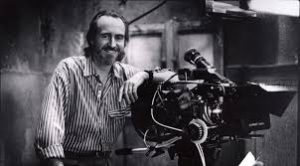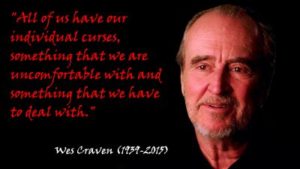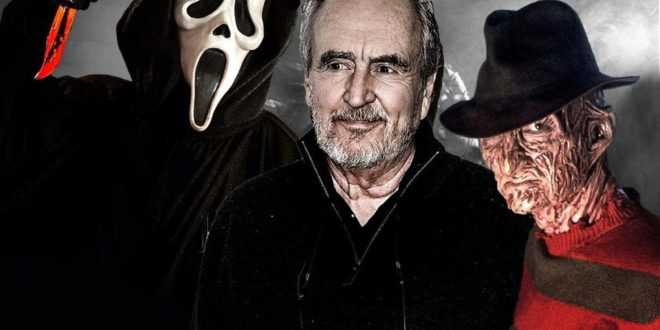Wes Craven is considered by many to be the ultimate father of horror. Born on August 2, 1939 in Cleveland, Ohio, Craven revolutionized the horror genre two separate times, once in the ’80s and once in the ’90s. Not only did he create a new face for slashers in Freddy Kruger in 1984, but he went on to spawn dozens of copycats in the ’90s whodunit era after his witty Scream franchise took off. With what would’ve been his 80th birthday just passing (he passed away in August of 2015 of a brain tumor), now is a fitting time to look back at the many successes of the writer/director.
Craven got an M.A. in writing and philosophy from the esteemed Johns Hopkins University in 1964. He then went on to teach in Pennsylvania and New York, before he started doing fieldwork in New York City. His gritty directorial debut, The Last House On The Left (1972), was considered brutal and graphic, but stuck with viewers for its realistic take on trauma. The Hills Have Eyes (1977 – read our retro review here) came next for the filmmaker, which examined a deranged, murderous cannibal family off the beaten path (a formula that’s been copied to this day).

Craven’s biggest hit came in the form of A Nightmare on Elm Street (1984 – read our retro review here). At a time when the slasher genre started getting bored of the over-saturated, mute, masked stalkers, Craven chose to go with a visually grotesque, charismatic dream-demon. Freddy Kruger was born from an article Craven read about a boy getting killed in his dreams, and this film turned horror on its head. He would later come back to the franchise to help write A Nightmare on Elm Street 3: Dream Warriors (1987 – read our retro review here), a wildly imaginative sequel that blended horror, sci-fi and comedy and is widely considered the best in the series. Wes wasn’t done there, as he came back to NOES once more in Wes Craven’s New Nightmare (1994), a meta film where he and the original cast returned as themselves to destroy Freddy in the real world. This revolutionary concept started a whole new kind of horror going forward.
Wes Craven evoked this style again in 1996’s Scream. At a time when horror was passe and considered all but dead, this self-referential, teenage murder mystery sub-genre came along and treated its audience with reverence. The characters were intelligent, the twists were shocking, and the genre itself was used as a plot device. Craven would go on to direct three more sequels in this fresh series. Although NOES and Scream were his biggest hits, there were so many others. There was the innovative Deadly Friend (1986 – read our retro review here), the statement-laden The People Under The Stairs (1991), and the tense Red Eye (2005). In total, between directing and producing, Wes Craven has 38 major credits to his name. His final directorial effort came in the form of Scream 4 (2011), where he spotlighted the changing times and ties to technology.

Craven was always on the cutting edge of the times. His work spanned five decades, and he continually evolved with the ways of the world. That’s why he was able to touch on so many different styles, and find a home with every type of horror fan. If you’ll allow me to editorialize for just a moment, Wes Craven is my hero in the horror genre. His pacing, his smooth dialogue, and his diversity are what made me want to become a writer and director myself. So Happy 80th Birthday, Mr. Craven. I don’t know if we can make a horror Mount Rushmore without you on it. Thank you for the scares.
 PopHorror Let's Get Scared
PopHorror Let's Get Scared




